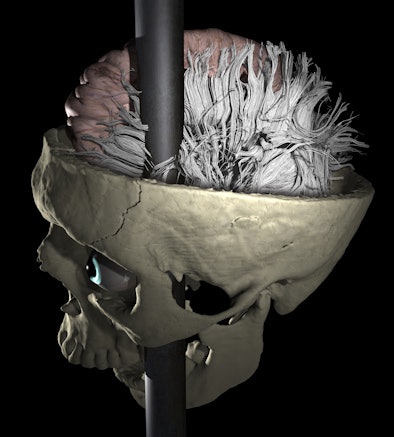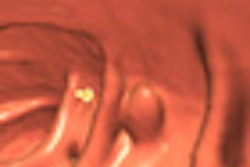
Railroad supervisor Phineas Gage suffered a terrible accident in 1848 when an explosion drove a metal rod though his left cheek and out the top of his head. But Gage didn't die from the accident, and his case now offers valuable insight into brain function, according to an article in PLoS One.
Gage went from being an affable 25-year-old to a fitful, irreverent, and profane person, according to John Van Horn, PhD, assistant professor of neurology at University of California, Los Angeles. Van Horn led a team that examined CT images of Gage's skull, combined with MRI images from modern patients.
 |
| Image shows location of rod that passed through Phineas Gage's skull and brain. Courtesy of PLoS One. |
CT images of Gage's skull, in combination with MRI and diffusion data from contemporary male volunteers ages 25 to 36, were used in a computational simulation of the rod's penetration through Gage's skull in an effort to assess the extent of cortical gray- and white-matter damage.
"We find that while considerable damage was, indeed, localized to the left frontal cortex, the impact on measures of network connectedness between directly affected and other brain areas was profound, widespread, and a probable contributor to both the reported acute as well as long-term behavioral changes," the study team wrote.
White matter and its myelin connect the billions of neurons that allow people to reason and remember, Van Horn said. The study, part of the Human Connectome Project, may lead to a better understanding of multiple brain disorders that are caused in part by similar damage, the group concluded.




















